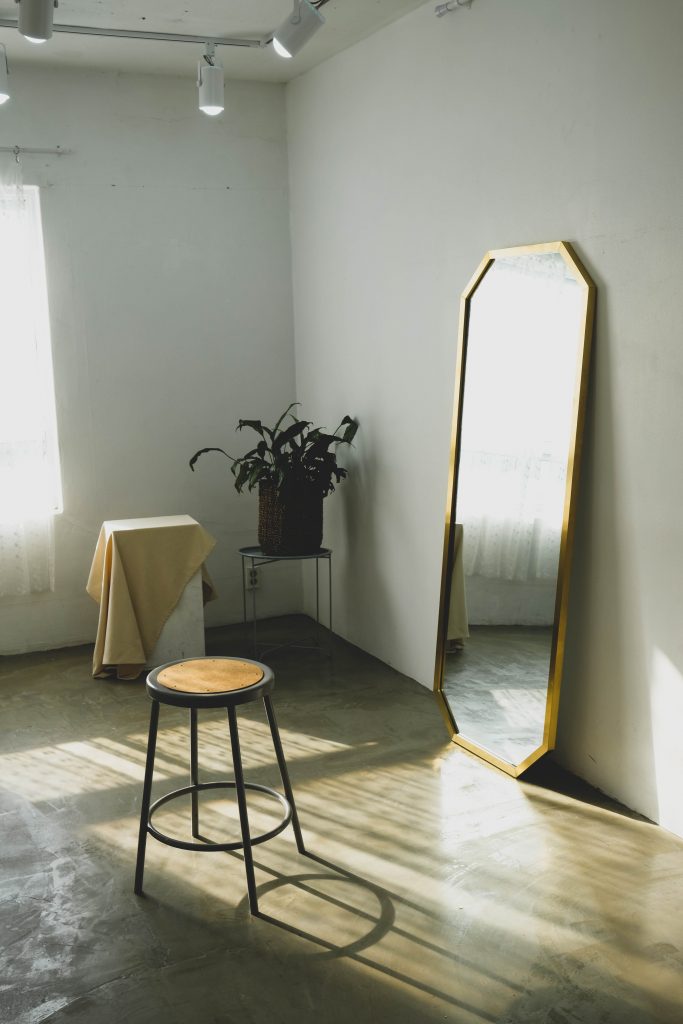And now for something completely different. Today, I’m celebrating the 10th anniversary of a breast reduction, and I want to share some thoughts about body positivity.

Growing up, having a positive body image was never that big of a challenge for me. Sure, as an American girl, and especially as a dancer, I had a few insecurities about my so-called “problem areas;” namely, the space just below my belly button—where jeans zip up. I remember doing warm-ups in dance class when I was around 14 years old, and my teacher instructed us to scoop our belly buttons in toward our spines. I was scooping, but my teacher couldn’t tell, so she called me out saying, “Nina, scoop your tummy!”
But anyway. Compared to most of my peers, my body image was quite healthy. I didn’t obsess over my sub-belly button area, and it certainly didn’t define me or change my worth.
I was pretty scrawny when I was young, but I started filling out in fourth grade. What’s amazing, looking back now, is that I didn’t even notice! I was blind to my changing body; I saw myself the exact same way I always had. I wore bike shorts under my dresses so that I could play and dance at recess, not to alleviate the rubbing of my thighs.
My best friend and I were about the same size, though she didn’t go from scrawny kid to barrel-shaped 10 year-old—she was a little pudgy for as long as I knew her, which was since kindergarten. One day, she told me that her mom put her on a diet. It never even crossed my mind that being the same size, I would need to go on one, too. Let me be clear: I didn’t need to go on a diet, and neither did she. We were active and healthy girls and weight gain just before puberty is completely natural. We should have been enjoying our childhood, not worrying about what size we were. I can thank my mom for throwing a complete fit and using it as a teachable moment when I told her about my best friend’s diet.
But after puberty, things changed (as they do). Besides that spot below my belly button expanding, my breasts started developing. And throughout high school, even after I hit my adult height of 5’ 4”, my breasts didn’t stop growing. Every cup size after C brought on more and more tears. My right breast was especially prolific: it was over a full cup size larger than the left. At a pool party in high school, feeling brave enough to wear a bikini, one friend nicknamed my left breast “David” and my right “Goliath.” Everyone had a good laugh—including me. But I felt like a freak.
I bought bras to fit Goliath and put a “cutlet”—a silicone insert that looked just like a raw chicken breast—in David’s cup. It would get sweaty and sometimes smell a little funky. As I started dating and hooking up, rounding the bases was nerve-wracking. Taking a time-out to warn a date about my boobs wasn’t the best for the mood or my otherwise very confident demeanor (truly the sexiest thing about me).
After a while, I got sick of the cutlet (and maintaining the appearance of symmetry) and started buying bras in two sizes and cutting them up and sewing them together, smaller cup on the left, larger cup on the right. I called them my Frankenbras.
As I got older, the thought of getting a breast reduction would cross my mind often, but I always talked myself out of it in the name of body positivity. I try not to engage in negative self-talk—especially about my body—and I wanted to believe that I could overcome my bosom woes through radical self-acceptance. I would recite mantras like, “I love my body as it is today,” and “Society has taught me that breasts have to be the same size, but I love mine the way they are!”
But I was lying to myself.
I did not love my breasts. I especially didn’t love Goliath because it was so, so big. Individually, each of my breasts was quite cumbersome; together, they were debilitating.
When I was 26 years old, I started running. Sports bras that were supportive enough for such high-impact activity were expensive, hard to find, and sometimes painful to wear. Around the same time and probably not by coincidence, I gave up on trying to convince myself that I loved every part of my body and went to see a plastic surgeon. We talked about why I wanted a breast reduction, discussed the risks and my medical history, and he took pictures. Then, he wrote up a report for my insurance company to use when determining whether they would pay for the procedure. The staff at the plastic surgeon’s office were convinced I’d be denied, so I sat in a private little room with a very thin, very polished woman and talked about out-of-pocket costs and payment plans. But, given my finances, the surgery could not happen if my insurance did not cover it.
Fortunately, my insurance company approved my request! The staff at the surgeon’s office was shocked. I was over the moon, but a part of me was convinced that the reviewer saw my pictures and determined that my breast asymmetry was just too freakish to deny. I imagined they flipped open my file, saw my photo, and flinched, then stared, like they were looking at roadkill: it wasn’t pleasant, but they couldn’t look away.
I scheduled my surgery posthaste.
The day of my surgery, just before going under, my surgeon drew on me using my hip bones as a guide. He said he thought I’d ultimately end up with B- or C-cups. It was music to my ears. (Though, admittedly, a B-cup seemed rather small, but who was I to complain?)
Recovery was simple. In fact, the worst part was having an allergic reaction to the detergent I used to wash my post-surgical compression bra. Once I figured that part out, the rest was smooth sailing.
Now, ten years later, getting breast reduction was one of the best things I’ve ever done for myself. My only regret was not doing it sooner; but, ironically, I doubt I would have been as compassionate with myself for choosing surgical intervention over radical self-acceptance any earlier.
Sometimes I wonder if I could have grown to love my breasts the way they were, but I really don’t think I could have.
Coming to that realization taught me that we must be kinder to ourselves. Everyone should love and praise their own body! But covering up dissatisfaction with hyper-positivity can be exhausting and painful, and it’s okay to admit when you just cannot accept something the way it is.
That said, when we have feelings of extreme negativity toward our bodies, I think it’s important that we take the time to reflect on why we feel them. It’s not called radical self-acceptance for giggles.
A while ago, I was at a clothing swap with some girlfriends. One of them stood up and pointed out all of her “problem areas” to us, using her fingers as calipers to squeeze her flesh together to demonstrate what she’s planning to have removed. It was heartbreaking. This is the same friend who didn’t enjoy a very challenging pilates class because the instructor’s body type wasn’t what you would expect from a fitness instructor.
It makes me wonder what she thinks of my body (which I love and that’s what matters), and our friends’ bodies. Do we disgust her? Does she think I should have my sub-belly button area and inner thighs sucked out, too?
While we must be kinder to ourselves, we also must be kinder to each other. Kinder about others’ bodies, empathetic to their opinions of their own bodies, and accepting of the choices they make about their bodies.
I’m learning to see my friend as a victim to all of the societal messages about what our bodies should look like instead of the villain, but it’s an arduous journey. Someone (society) told her that her thighs are a problem and she believed them. I wish she didn’t.
Whether someone chooses to reduce their breast size—or increase it—in order to get a little closer to loving their body (and they’re not hurting anyone in the process), they deserve to be supported like a high-impact sports bra that can handle large and largely-asymmetrical breasts.
And while we’re being supportive, let’s also re-examine why it’s so radical to love ourselves the way we are.



